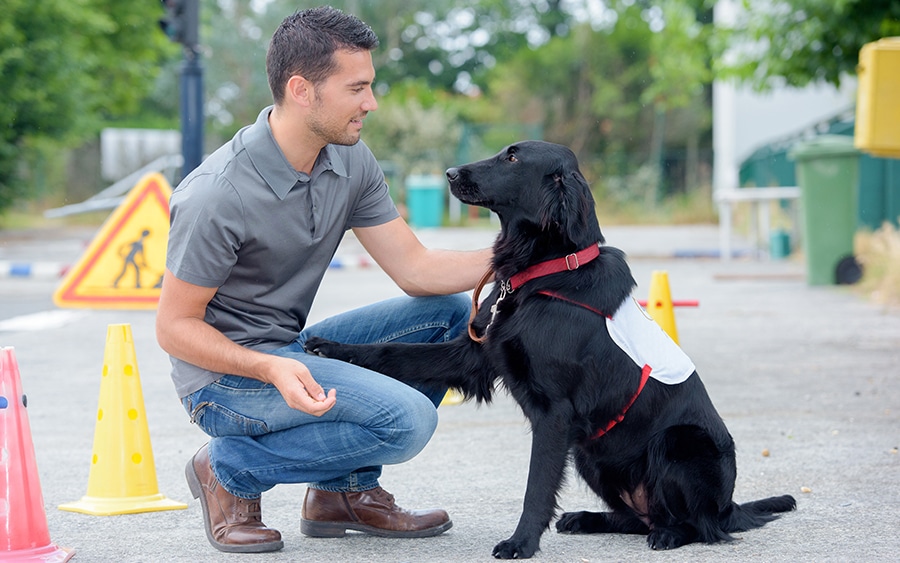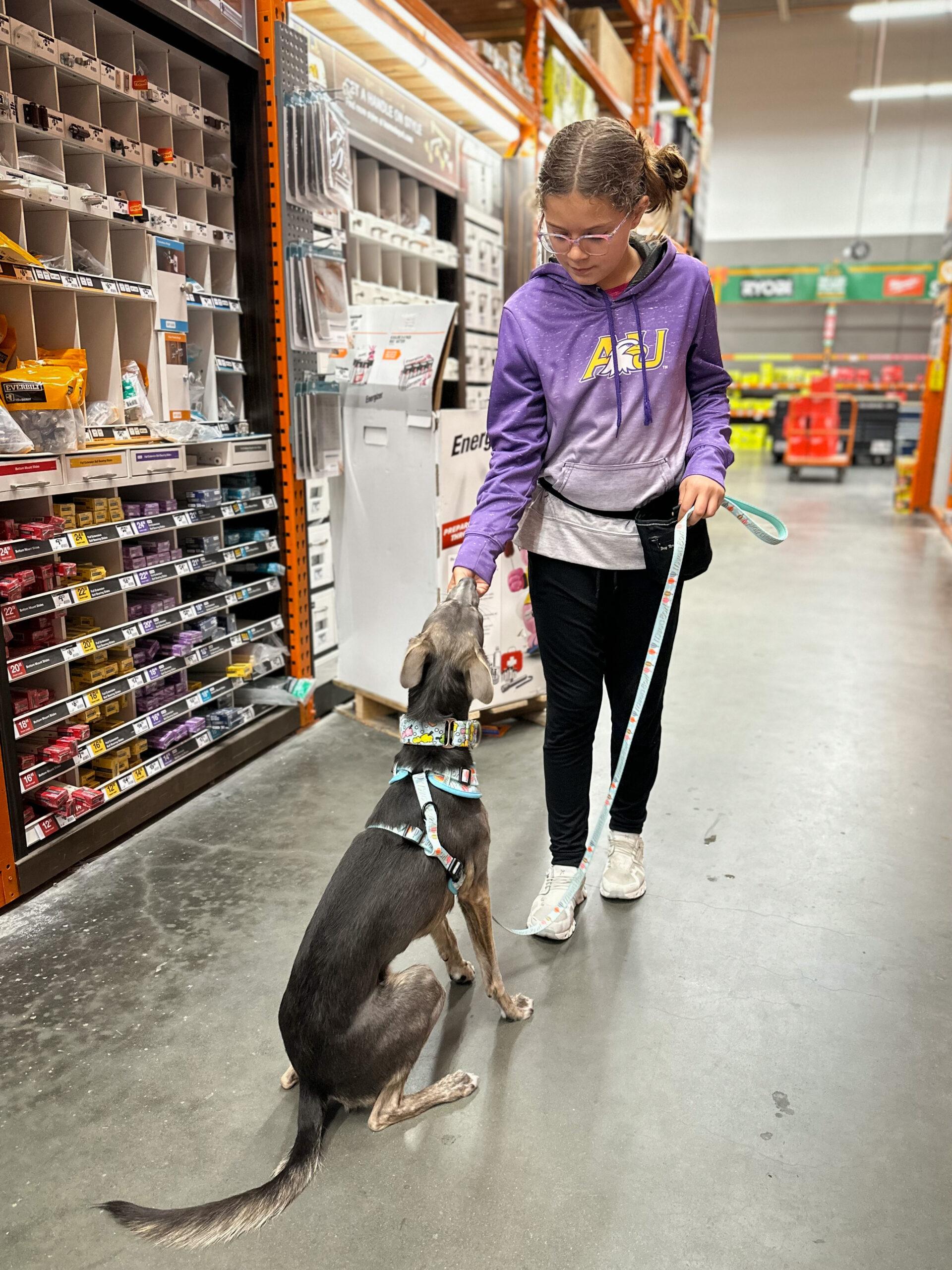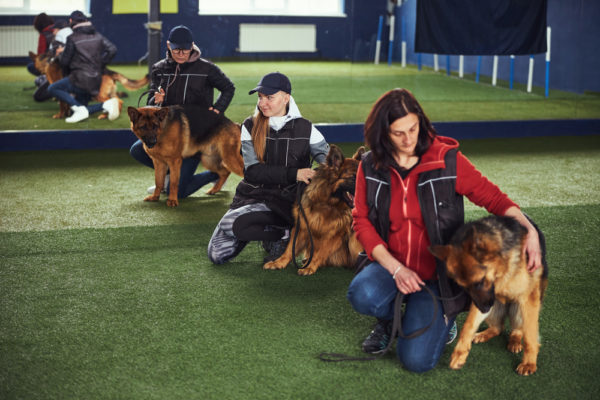Quality Puppy Training for a Happy, Obedient Dog with Professional Help
Quality Puppy Training for a Happy, Obedient Dog with Professional Help
Blog Article
Transform Your Canine's Habits With Proven Training Approaches
Changing your dog's behavior requires a nuanced understanding of their private qualities and demands, along with the application of tried and tested training approaches. By using positive reinforcement and recognizing necessary cues in their body language, you can successfully resolve common behavioral problems such as too much leaping or barking. Consistency in your training approach not only enhances obedience however also fosters a deeper bond of trust and respect in between you and your family pet. Nonetheless, the course to effective makeover might provide unpredicted challenges that warrant further exploration.

Recognizing Dog Behavior
Recognizing dog behavior is crucial for reliable training and communication in between human beings and their canine buddies. Pets, as social pets, exhibit a series of behaviors influenced by genes, atmosphere, and experiences. Acknowledging these actions assists owners tailor their training approaches to meet the specific requirements of their canines.
Key aspects of canine actions include body language, articulations, and social interactions. A wagging tail typically indicates excitement, while a reduced head may signify submission or anxiety. Recognizing these signals can assist owners interpret their canine's psychological state and react suitably. In addition, socializing plays an essential role in forming behavior; pet dogs that communicate favorably with other animals and different people are usually much more well-adjusted and adaptable.
Additionally, recognizing stress signals-- such as pacing, panting, or evasion behaviors-- can avoid escalation right into extra major concerns. Owners that are in harmony with their pet's habits can create a caring and safe setting, promoting count on and improving the training procedure. Eventually, a deep understanding of canine behavior lays the foundation for an unified relationship and effective training outcomes, making sure both canines and their owners grow together.
Favorable Reinforcement Methods
Positive reinforcement strategies are commonly acknowledged as one of one of the most effective methods for training dogs, cultivating a positive knowing environment. This strategy includes fulfilling wanted behaviors with deals with, praise, or play, consequently urging the canine to duplicate those habits (Dog training). Unlike corrective methods, positive support constructs trust and enhances the bond between the instructor and the pet dog
To implement positive support successfully, timing is critical. Rewards ought to be provided instantly complying with the preferred habits to aid the pet make the connection. Uniformity is likewise important; making use of the exact same commands and incentives helps the canine understand what is expected. Furthermore, differing the rewards can keep the dog engaged. Rotating between deals with, toys, and spoken appreciation can keep interest and inspiration.
It is necessary to note that positive reinforcement is not concerning bribery; rather, it has to do with reinforcing etiquette. Over time, as the pet dog finds out to associate specific activities with positive results, the regularity of incentives can be slowly decreased, transitioning to spoken appreciation or recurring benefits. This method not only motivates obedience however additionally advertises a certain and pleased canine, making training an extra delightful experience for both events involved.
Resolving Common Issues
Addressing common concerns throughout pet dog training is vital look here for making certain a unified and successful connection between the canine and its proprietor. Many dog proprietors come across behavioral difficulties, such as too much barking, jumping, and chain drawing. Comprehending the origin triggers of these behaviors is vital for reliable training.
Excessive barking might come from monotony, anxiety, or an absence of socializing. To minimize this, give sufficient workout, psychological excitement, and opportunities for social interaction with both people and other dogs. Jumping can usually signify enjoyment or a wish for focus. Educating the pet dog to rest upon greeting can reroute this actions favorably.
Leash drawing is another prevalent concern, regularly resulting from a pet dog's eagerness to explore. Making use of proper chain taking care of strategies, incorporated with training procedures that encourage loose-leash walking, can substantially boost this behavior.
Furthermore, concerns like source safeguarding or separation anxiety need customized approaches. Steady desensitization and counter-conditioning can be efficient in dealing with these challenges. By recognizing and proactively managing these more info here usual concerns, pet dog proprietors can foster a much more enjoyable training experience and reinforce the bond with their canine buddies.
Consistency in Training
Consistency is a foundation of effective canine training, as it develops a clear framework for the canine to comprehend habits and assumptions. When commands, benefits, and cues are applied uniformly, pet dogs can extra easily comprehend what is needed of them. Irregular training can bring about complication, resulting in unfavorable behaviors that annoy both the pet dog and the trainer.
To attain consistency, it is important that all participants of the house stick to the very same training methods. Using the very same spoken signs and hand signals ensures that the pet dog receives uniform messages. In addition, the timing of improvements and incentives should be constant; instant reinforcement raises the probability that the pet will associate the actions with the outcome.
Regular practice sessions, combined with structured routines for feeding, walking, and play, assistance pets expect and comprehend their atmosphere, making them more receptive to training. Ultimately, uniformity cultivates a feeling of protection and count on, equipping pet dogs to learn extra effectively.
Building a Solid Bond
How can promoting a solid bond between a dog and its proprietor improve the training experience? When a dog really feels secure in its connection with its proprietor, it is much more likely to show favorable actions and be receptive to learning.

In addition, a reputable link can reduce stress and anxiety and behavior issues, as dogs are much less likely to act out when they really feel comprehended and looked after. Prioritizing the growth of a solid bond not only boosts the training experience yet likewise adds to a happier and more well-adjusted pet. Eventually, the journey of training changes into a collaborative collaboration, leading to lasting behavioral enhancements.
Conclusion

Proprietors who are attuned to their canine's behavior can develop a secure and nurturing setting, cultivating depend on and improving the training procedure. Ultimately, a deep understanding of canine behavior lays the structure for an unified partnership and efficient training outcomes, making sure both pet dogs and their owners prosper with each other.
Resolving typical problems throughout dog training is important for making sure a unified and effective relationship between the dog and its proprietor (Dog training).Consistency is a foundation of reliable pet dog training, as it develops a clear framework for the pet to understand assumptions and behaviors.In final thought, transforming a pet's habits via proven training techniques requires an understanding of canine habits, the application of favorable support methods, and a focus on consistency
Report this page